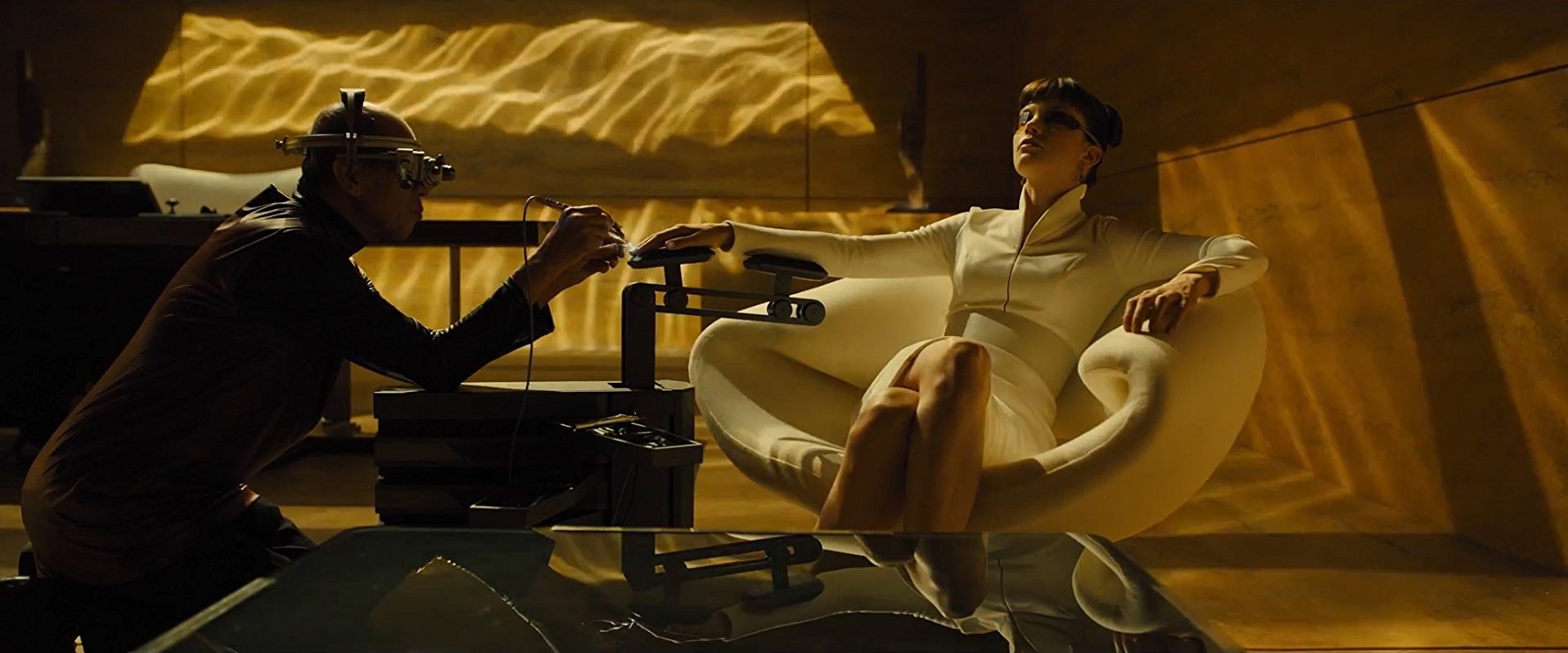Photo credit: Warner Bros.
It’s been a long time coming, but I’m finally writing the second part to my Blade Runner: 2049 series! This time, we’re talking about the rampant racial insensitivities showcased in this film.
I’m surprised a film of this magnitude and of this scale decided to show one of the most regressive and most racially-charged images I’d seen in a while; replicant Luv (Sylvia Hoeks), the replicant assistant to Niander Wallace (Jared Leto) is shown getting her nails electronically altered by a small Asian man, whose hunched over, deep in his work.
The stereotype of the Asian nail salon tech has made its way into the future.
To be clear: this isn’t to say that working in a nail salon is a profession to stick your nose up at. There are complex issues of immigration, entrepreneurship, and women’s rights at work within the scholarship of the rise of the Asian-owned nail salon (yes, scholarship), so the nail salon and its workers aren’t what I’m scoffing at. What I’m scoffing at is the flattening of these truths into the butt of a visual joke. It’s the equivalent of Bill Maher’s idiotic joke about North Korea and the women in his closest nail salon. It’s the culturally stereotypical image photography like this is trying to fight against.
This image is only just one of the many instances in which people of color are positioned either as objects or as criminals. For all of it its focus on a beautiful yet bleak future, Blade Runner 2049 keeps its racial politics stuck in 1982.
Sexualized and absent Latinx characters
Joi (Ana de Armas), the Wallace Corp.’s virtual girlfriend product, is of course, an object just by her very nature of existence. But the objectification is kicked up to a racial degree since Joi is Latina. In that vein, Joi falls in line with many of Hollywood’s other Latina female characters who are sexually objectified due to racial stereotypes surrounding Latina women.
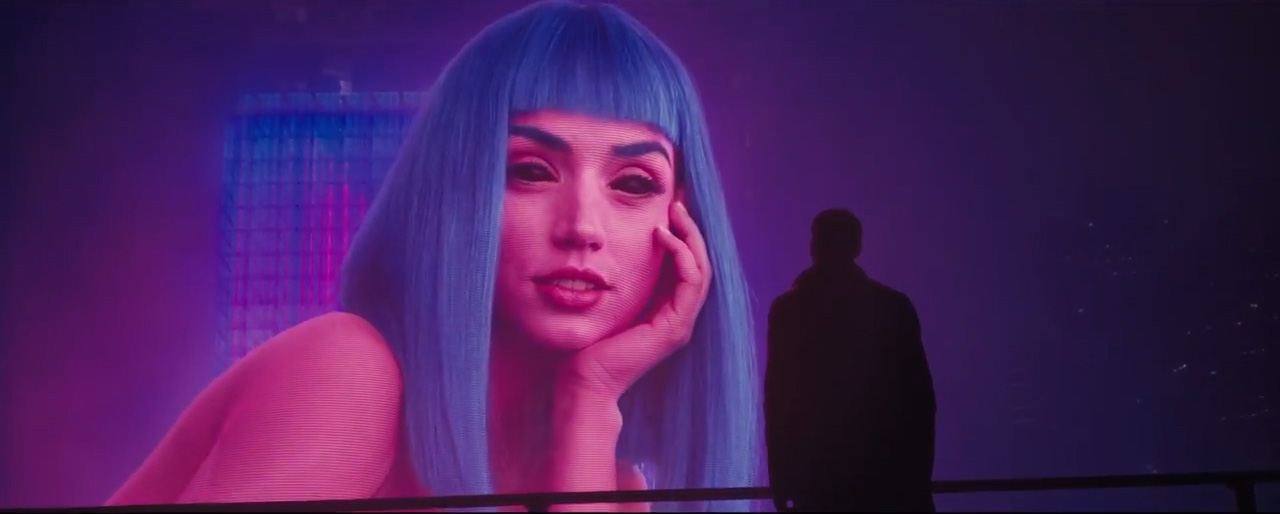
Even though Latina representation is already low as it is, as reported by the Annenberg School of Communication and Journalism, The little Latina representation that is in the public eye is largely dominated by sexualized roles. This January, FiveThirtyEight asked 13 women in the industry to devise their own Bechdel tests to see if today’s film meet the mark.
Go, Diego, Go! writer and producer Ligiah Villalobos made a Bechdel test measuring Latina roles in 50 films, with the criteria for a passing grade being that the film needed, according to People Chica, “1) a Latina lead character and 2) a Latina lead portrayed as a college-educated professional speaking unaccented English and unsexualized.” Under her test, none of her films passed, and Villalobos called her results “incredibly disappointing” since “…this country has over 50 million Latinos, and that these are the numbers relating to Latina characters in films.”
Producer Lindsey Villarreal (Mad Men, Bates Motel, The Strain) also studied Latina roles to see how often they fell into the “sexualized, expressionless, or…overworked matriarch” stereotypes. Her test also included “a more nuanced view of character development, stating that a movie could ‘redeem itself’ under certain conditions: The woman is either 1) a mother 2) a woman whose jobs or career involves a position of authority 3) one who is reckless or makes bad decisions 4) someone who choses to be sexual.” Out of the 50 movies she analyzed, 23 failed the test while 27 passed. In other words, nearly half of the films failed a simple call to make a fully-realized female character. Even though there was a little over half succeeding, the test shows that there should really be more films that meet the mark, not just half.
Unfortunately Joi is one of those many Latina roles out there in Hollywood that does reduce a Latina woman down to their sexuality. Joi’s chief goal in life is to please K (Ryan Gosling), whether that’s mentally, visually, or even sexually, despite being a hologram.
As I wrote in my Blade Runner: 2049 gender analysis:
“Joi, we’re led to believe, is supposed to be undergoing some type of mental progression. But it seems more like she’s fulfilling her programming by choosing to love K more intensely over the course of the film, to the point where she asks him to transport her to a portable device. When K initially refuses, scared that it might cause him to lose her forever, she does exert some power by saying if he didn’t do it, she could do it herself. But this one moment of personal power isn’t enough to overcome her other moments of mindlessness. Also, the two times she does use her own power is only in service of K, not for her own mental exploration.
…Out of the entire film, the grossest part for me was seeing Joi pay for the services of replicant prostitute Mariette (Mackenzie Davis) in order to have sex with K. The scene was supposed to be one that inspired pathos for Joi’s condition as a hologram–she can’t actually touch K–but seeing it play out was like watching an idea that seemed good in someone’s head become horrifying when enacted in real life.
The scene doubled down on the Blade Runner franchise’s lackadaisical treatment of women, this time proving that it does believe that women are not only props, but are interchangeable ones. Was K having sex with Joi or with Mariette? Does it even matter? It seems like it doesn’t, since towards the end of the movie, K caresses Mariette’s face with the same loving tenderness he tried to caress Joi with–and Joi had just ‘died’ in the prior scene.”
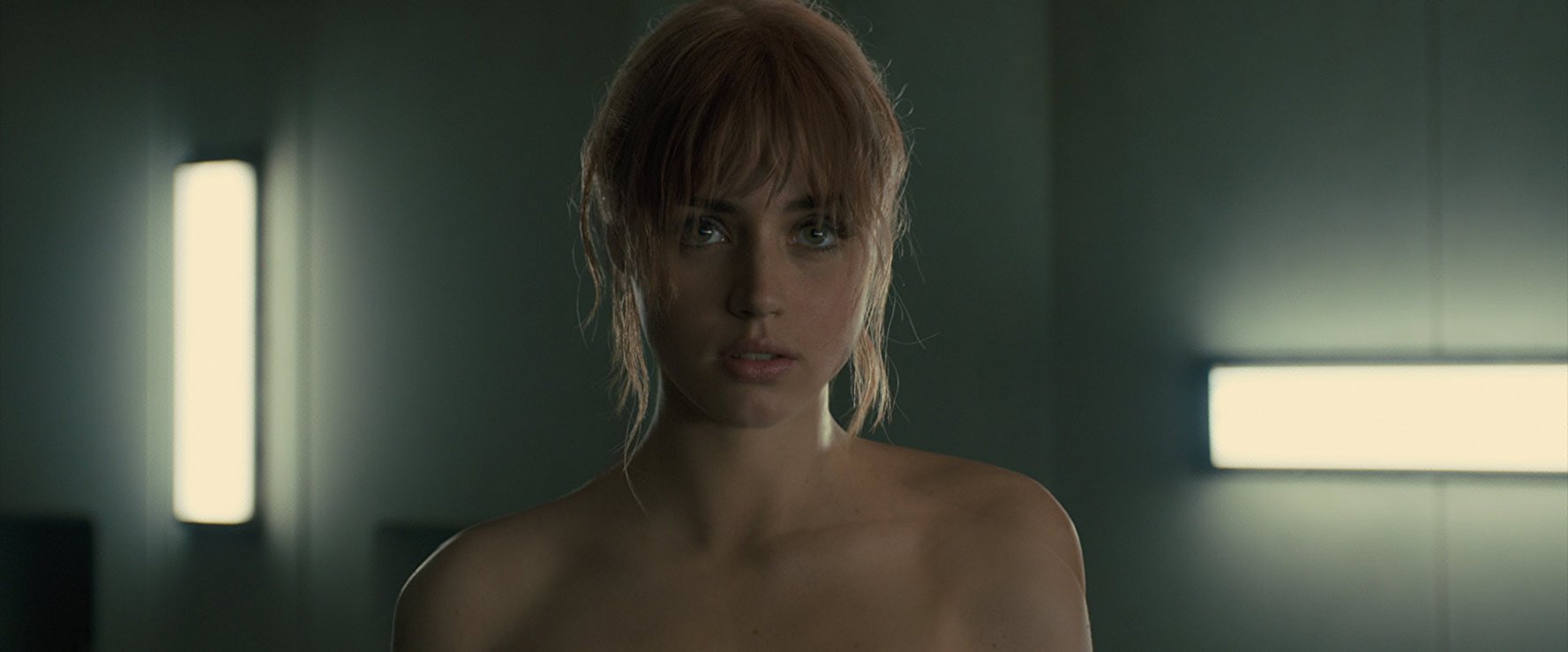
Joi is a character who is sympathetic and likeable–de Armas does great with the role she is given. But she could have been given so much more, especially since on top of the hypersexualization, Joi ends up dying towards the end of the movie. In fact, all of the women in this film could have been given so much more instead of act as props for the male leads.
There’s one other Latino actor in here: Edward James Olmos. His role as Gaff acts as a bridge between the original Blade Runner and this film, since he was Rick Deckard’s (Harrison Ford) partner on the force. But Olmos’ role seems to have been built up to mean more than it actually does in the film, since we only see him for literally five minutes, if not shorter. Having Olmos for just one scene is painful as it is, since he’s a fantastic actor. But it’s doubly painful that his short role is in a film that is in dire need of meaningful Latinx characters. Seeing how we are in Los Angeles, you’d think there would be more people of color on the whole instead of how white the film actually is. Wouldn’t it have been cool to see Gaff and K team up on the search for Deckard? Like, Gaff has got to think it’s weird that Deckard would go into hiding and is now a person of interest to a blade runner all of a sudden. There was a real opportunity here that was either squashed or never thought of in the first place.
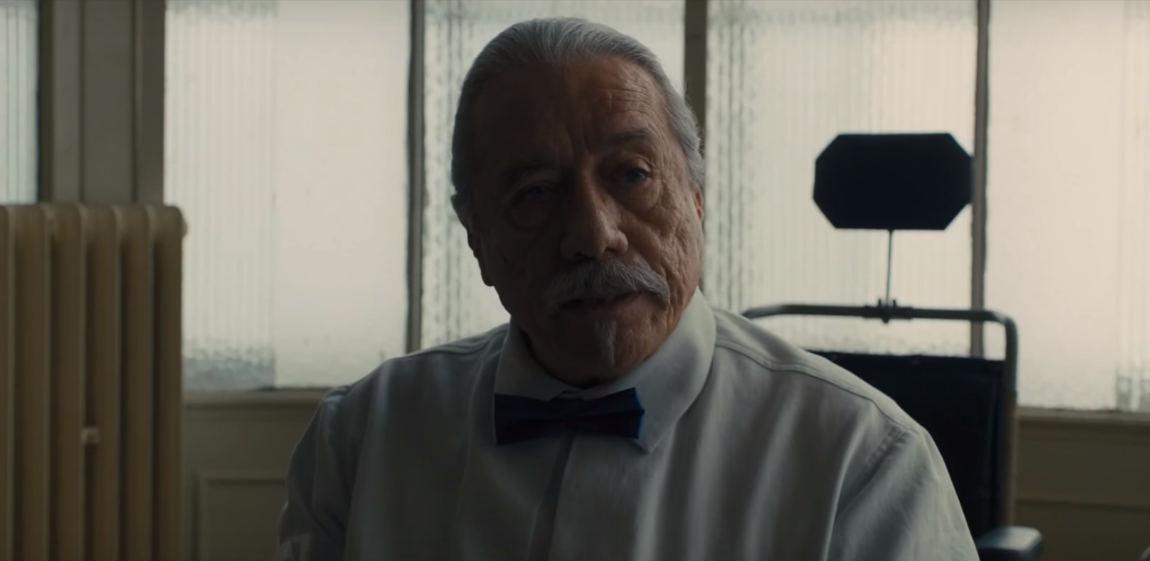
My point concerning Latino characters in Blade Runner: 2049 boils down to this: The majority in Los Angeles is Latino–48.5 percent of the population, to be exact (via the 2010 Census). If that’s the case, then why are we only treated to two Latino characters in the entire film? And with those two characters, why are they either stereotypes or barely showcased in the film?
Criminal black guys and one lone black prostitute
There are two black guys in Blade Runner: 2049, and both are on the spectrum of criminal. The first one we meet, who is definitely a criminal, is Mister Cotton (Lennie James), who runs an orphanage/sweatshop. When he thinks K is a customer, he’s all bravado, but once he realizes K is a cop, he’s turns into a cowering mess, showcasing the basic binary many black stereotypes of are based in. Too many times, black actors are cast either to be hard, emotionless and/or angry hulks or cowardly comic relief. On top of that, many of the roles offered to black actors involve criminality.
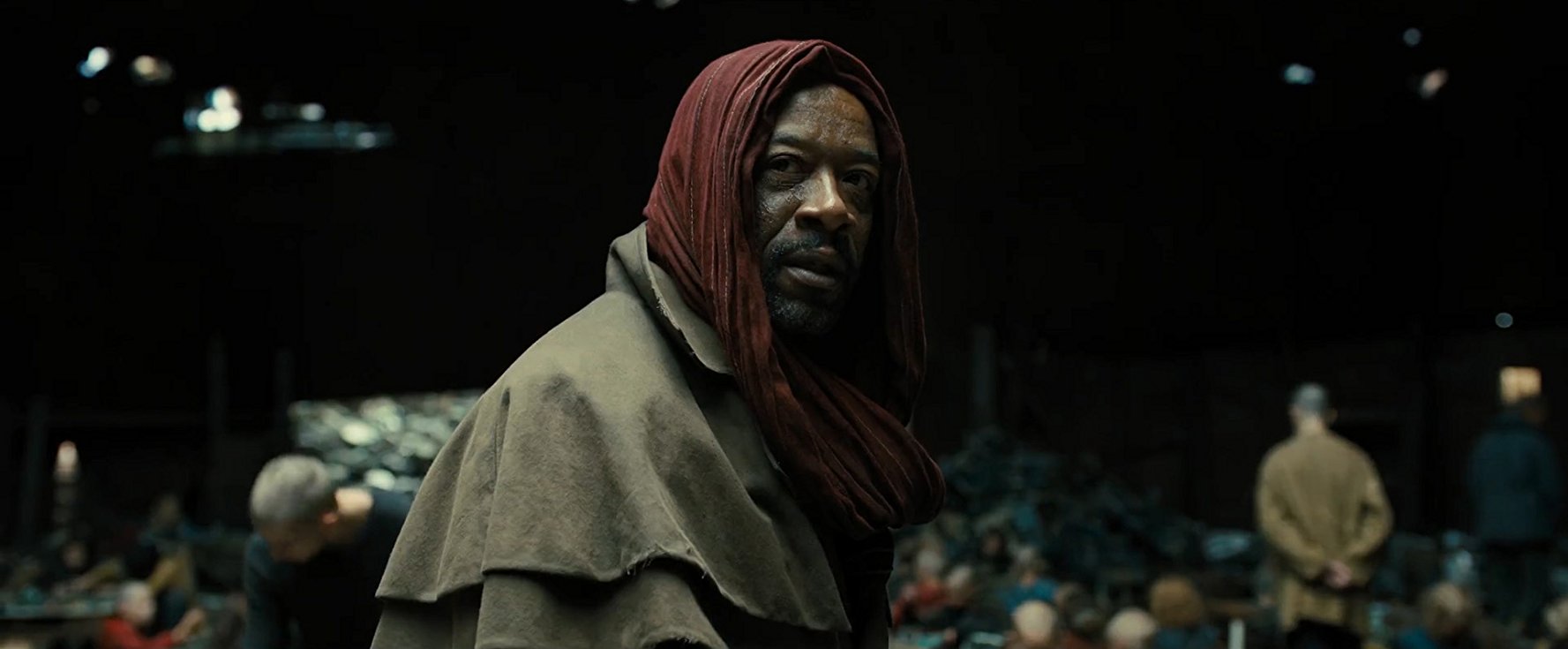
Vox enlisted the help of The Numbers’ analyzer Bruce Nash to compile the racial demographics of actors tasked with playing roles listed as “‘gang member,’ ‘gangster,’ ‘gangbanger,’ or ‘thug.'” For each role breakdown, the roles went overwhelming–around 60 percent–to black actors. Only 18 percent of “police officer” roles went to black actors, and “doctor” and “pilot” roles were around 9 percent (“doctor”) and 3 percent (“pilot”). As Vox points out via the National Gang Center, black people only make up 35 percent of all gang members in America, yet black faces are the ones mostly represented as criminal.
The trend of criminality among black men in Blade Runner: 2049 continues with Doc Badger (Barkhad Abdi). Hollywood could do more with Abdi, especially after his Cinderella story with Captain Phillips, which propelled him all the way to the Oscars. Thankfully, he has become a steadily-working actor, ranging from TV projects to what sound like promising film titles like the upcoming films The Extraordinary Journey of the Fakir, Beneath the Sea of Lights, and A Girl from Mogadishu, starring How to Get Away with Murder star Aja Naomi King. But, while Doc Badger, is a big role on his resume, it’s a largely thankless one for Abdi, who is, like Olmos, only on screen for limited time, and on top of that, he’s a bootlegger, or as Wikipedia calls him, “a street-wise fixer.”
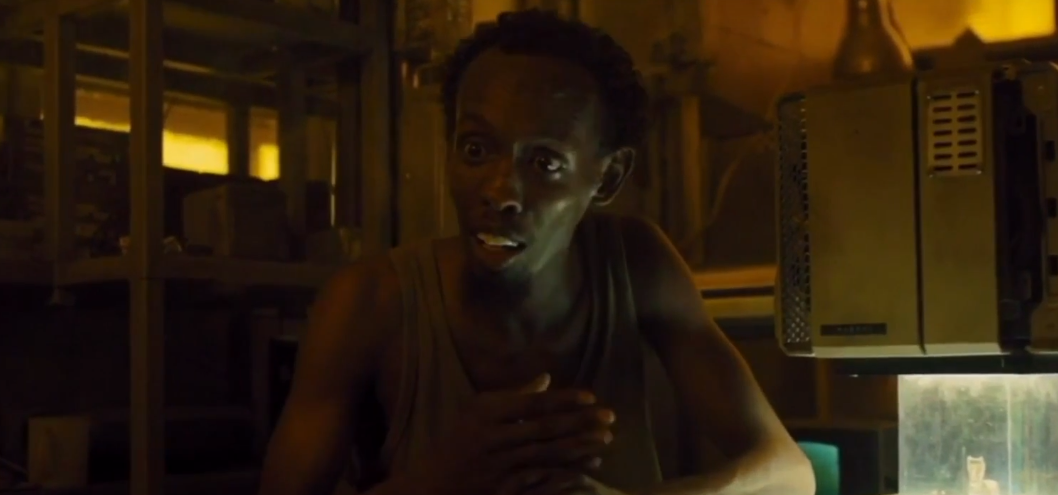
Aside from these two, there’s only one other image of blackness, and that’s in the form of a prostitute who only has one line of dialogue during her short amount of screentime. The fact that black men are reduced to criminality and black women are reduced to their bodies is in keeping with the overriding themes of Blade Runner: 2049 as a whole, which is that everyone and everything else is in service to the emotions of a white man, even when he finds out it’s a woman–not him–who’s the big folk hero of the replicants.
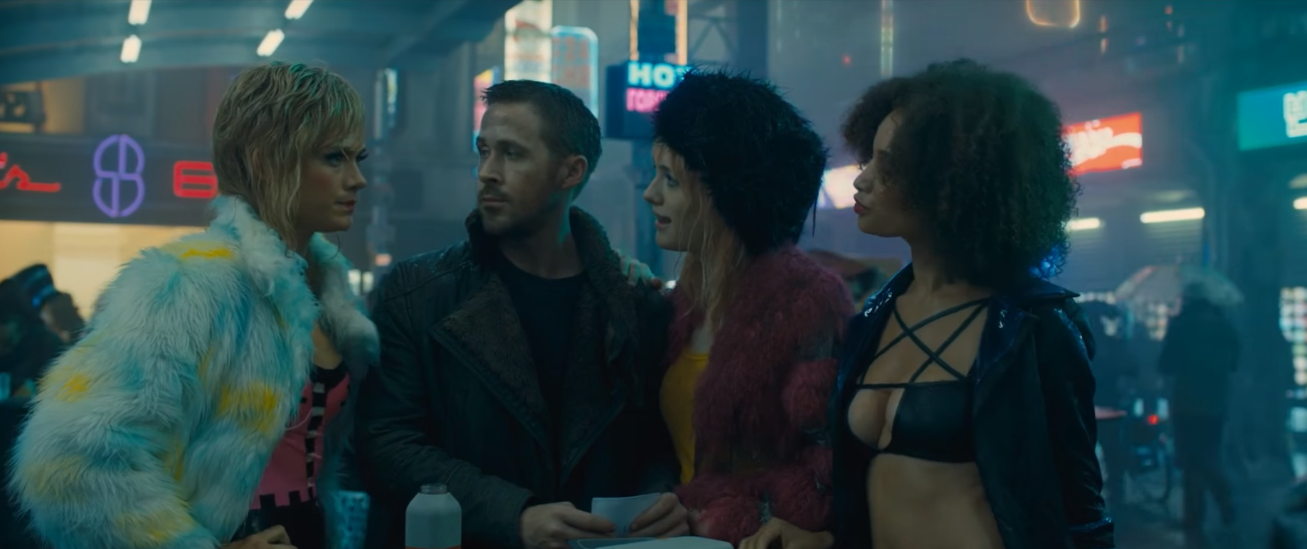
What’s even worse is that K isn’t even that compelling as a replicant. Every other replicant and virtual being in the film are more compelling than them. I’d argue that the true story of Blade Runner: 2049 should have been about Deckard’s daughter, since she’s the actual miracle birth.
Asian culture without prominent Asian characters
If the film absolutely needed a man to steer it, they could have easily cast Dave Bautista in the role instead of giving a tertiary position as replicant Sapper Morton. While Sapper is an important role, the character is also important Asian representation that gets shot down–literally–within the film. As Morton, Bautista was able to give a beautiful, haunting performance, but again, like so many other actors of color in this film, he was only given one moment of screentime to do is absolute best in. Why was Bautista, who was able to imbue human emotions into a non-human character, cast aside in favor of K, who is completely wooden 95 percent of the time?
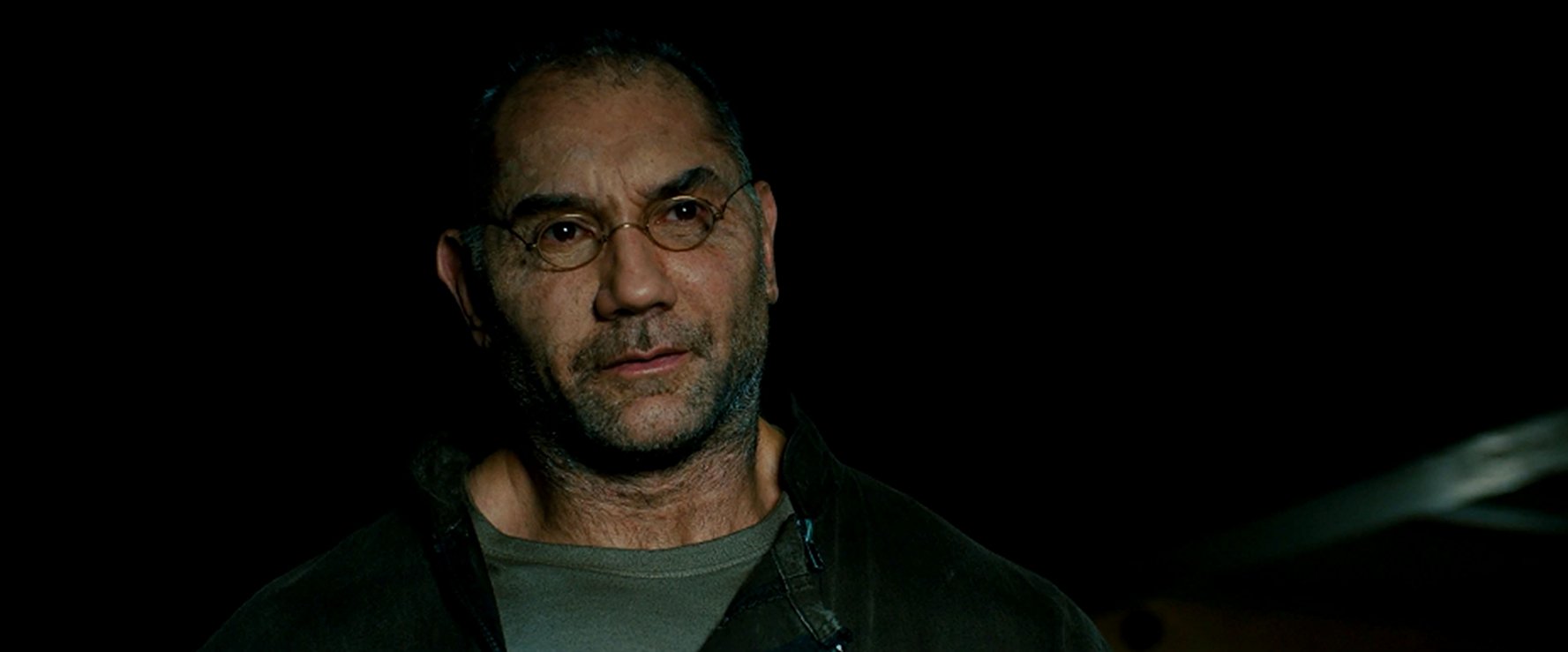
The other prominent aspect of Asian representation in this film, aside from the nail tech and Sapper, is the overwrought Asianness of Los Angeles. To be clear, Asian-Americans make up the second-largest non-white demographic in Los Angeles; according to 2010 census records, those who identify as “Asian” make up 11.3 percent. But even in the future, I don’t think the entirety of Los Angeles would become Neo Tokyo.
Clearly, there’s a lore that’s being posited in both Blade Runner movies; the Cold War that we experienced in our timeline manifested into something much more violent in the Blade Runner universe, to the point where U.S. world domination collapsed and Russia and Japan took over. While that does make for an interesting topic of discussion for a film, the backdrop of a Japanese-influenced Los Angeles 1) might not be the only path a futuristic Los Angeles could take, considering Latinos are the majority in Los Angeles, meaning their cultural influence is also the majority (and yet Latinos are barely represented in this film) and 2) looks terrible amid a period of time in which several films have been released simultaneously either with vague Asianness as a prop or backdrop, or an overt “Neo Tokyo” cyberpunk cityscape, most notably Ghost in the Shell.
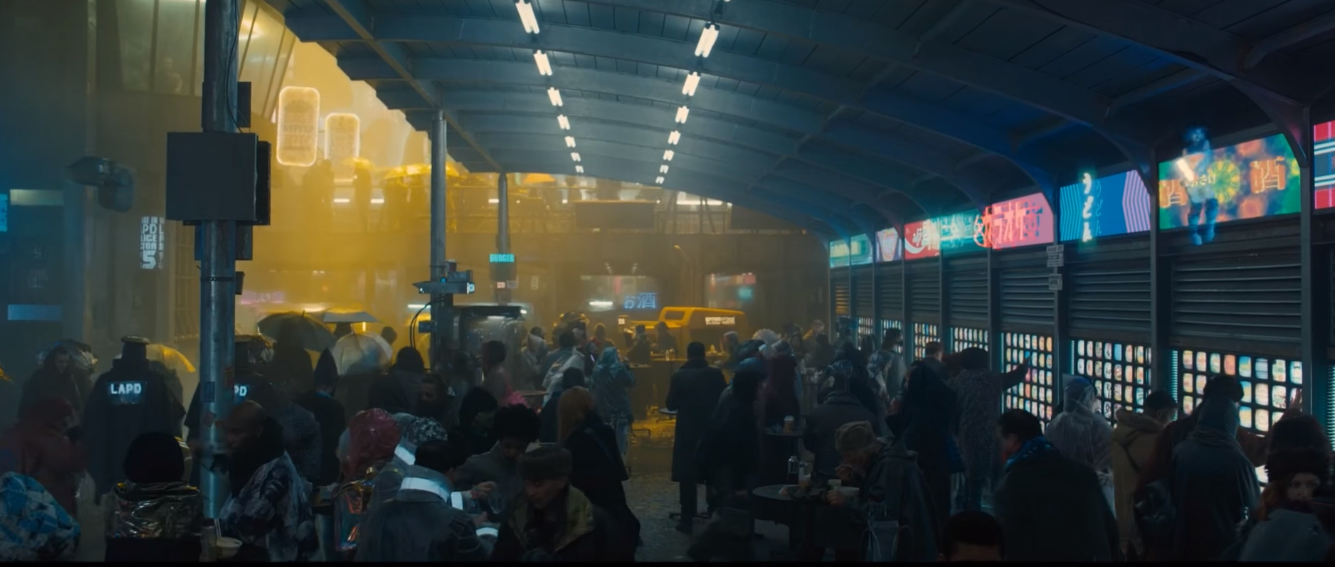
With Japanese culture used as a prop by so many films, it’s not lost on me (and others) that the only times an actual Asian character is shown, they’re either in subservience to a white character or they get killed. It’s cultural appropriation at work–pan-Asian cultures are only good enough to provide a backdrop and add “edge” to a film, but they aren’t good enough to investigate properly or even include fleshed-out Asian characters to help add some validity to the world that’s being posited. It’s probably the most blatant and egregious in the Chinatown scene–K is eating something out of what looks like a Japanese bento box in Los Angeles’ Chinatown, and while Chinese and Japanese iconography is everywhere, there are no Asian characters to be seen. Even the hologram of a Harajuku girl seems to be of a woman who may or may not be Asian; from my eyes, it looks like Joi outfitted in Harajuku clothing in order to sell something, maybe herself. But once again, the woman is sexually objectified, or rather, she’s sexually objectifying herself by turning around in a highly suggestive, but playful fashion, her full rear end and underwear on show thanks to her too-small skirt.
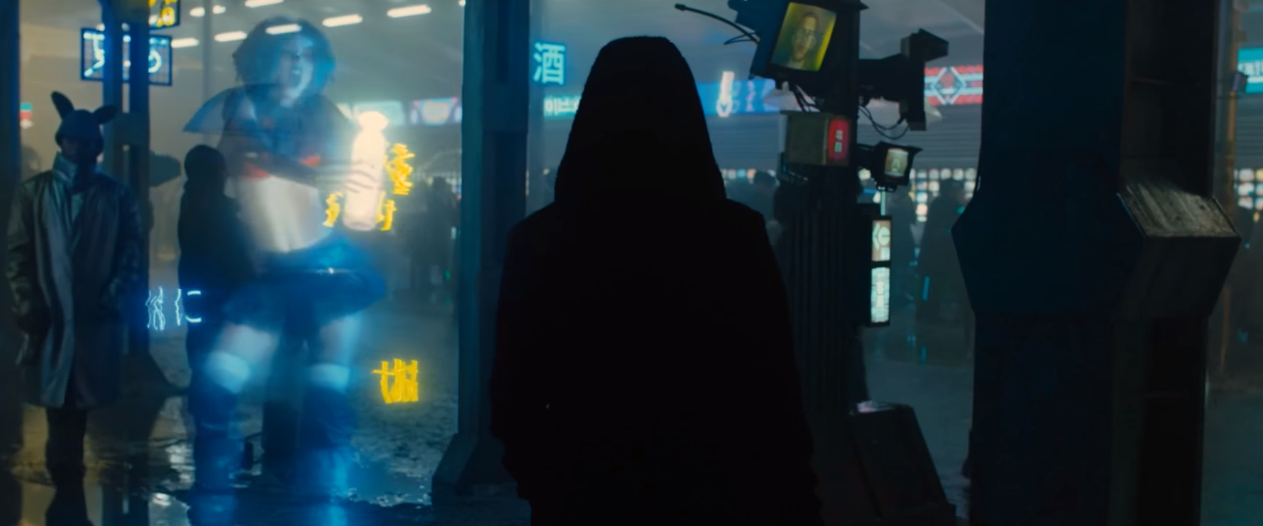
Also, the conceit of Chinatown still existing, yet being overrun by Japanese and Russian iconography and losing its own sense of individuality doesn’t speak to the enduring qualities of Los Angeles’ cultural boroughs such as Chinatown, Little Tokyo, Koreatown, and others. While being diverse communities themselves, these communities have still kept their specific cultural roots, and while Blade Runner: 2049‘s Chinatown is definitely Asian-inspired, its cultural significance and relevance to Los Angeles has been stripped from it, and instead has been reimagined as a hole-in-the-wall, a danky part of town where only a replicant sex parlor is the only big business. Is this really the best that can be imagined for a historical neighborhood like Chinatown?
In the future, stereotypes shouldn’t exist
Overall, Blade Runner: 2049 fails when it comes to showcasing meaningful racial representation. Even Russian culture is used as a prop, what with the Russian ballerina hologram and the Russian language used in various spots throughout the film.
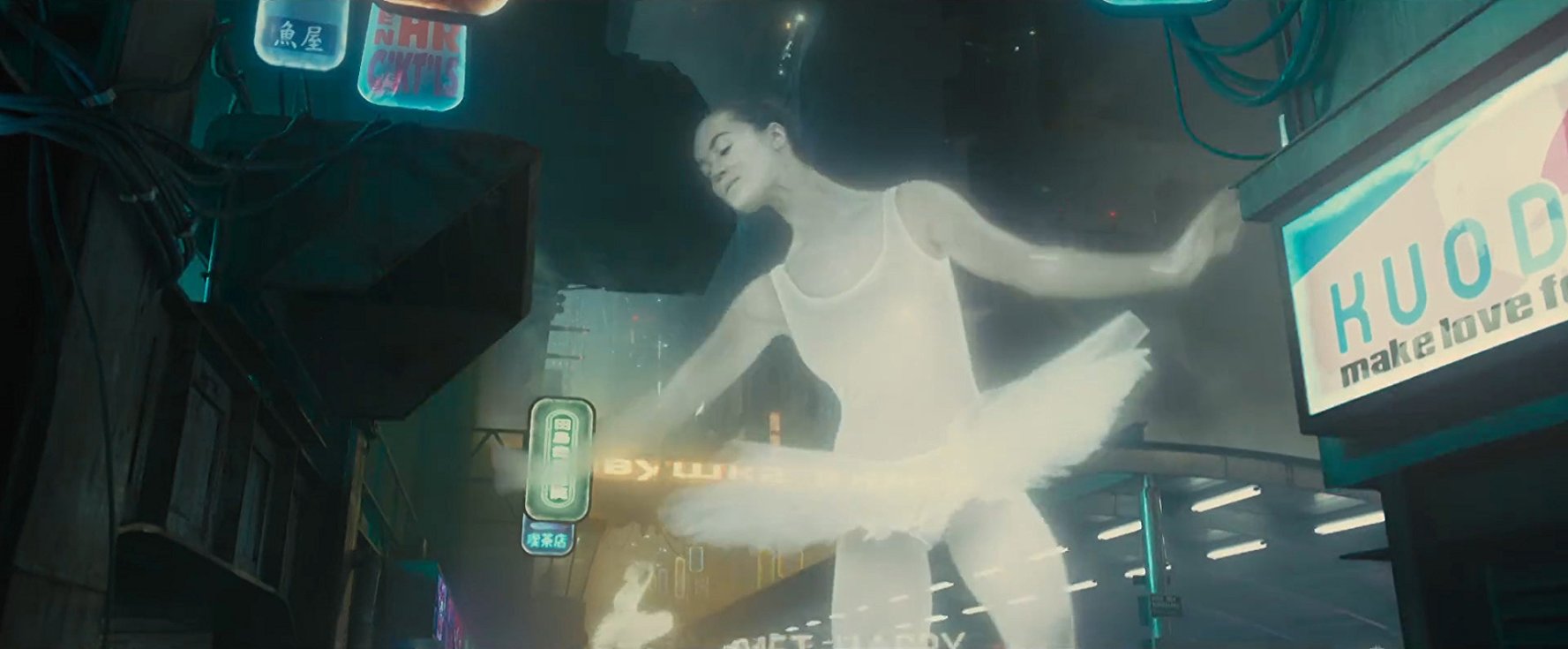
That word “representation” is something we should all think about, since simply representing something is easy. Joi, Doc Badger, Sapper Morton, Gaff, and the rest are all representation of marginalized racial groups. However, not all representation is good representation. In the “fight for representation,” as it has been called, it must be understood that what we are fighting for isn’t just to see images of ourselves onscreen; what we should call for–what I believe many of us are calling for–is complex, diverse representations of everyone.
Characters have a right to be good, evil, or in the middle. They have a right to be sexual or completely chaste. But the problem has always been that characters of marginalized backgrounds–in this case, racial backgrounds–are often only shown as one thing only. They are reduced to being defined by just one emotion or state of being, when great characters are allowed to experience the full range of human emotions. What the goal should be is for there to be enough representations of all facets of people of all races, orientations, religious backgrounds, etc., so we as audience members can finally see characters as fully realized, fleshed-out human beings instead of just one type of representation, aka stereotypes. In turn, we’ll see our fellow neighbors, friends, and family as fully realized. This is how entertainment can actually help heal society.♦
Loved this article? Follow JUST ADD COLOR at @COLORwebmag and on Facebook! If you want to support more writing like this, donate to my Ko-fi account!
